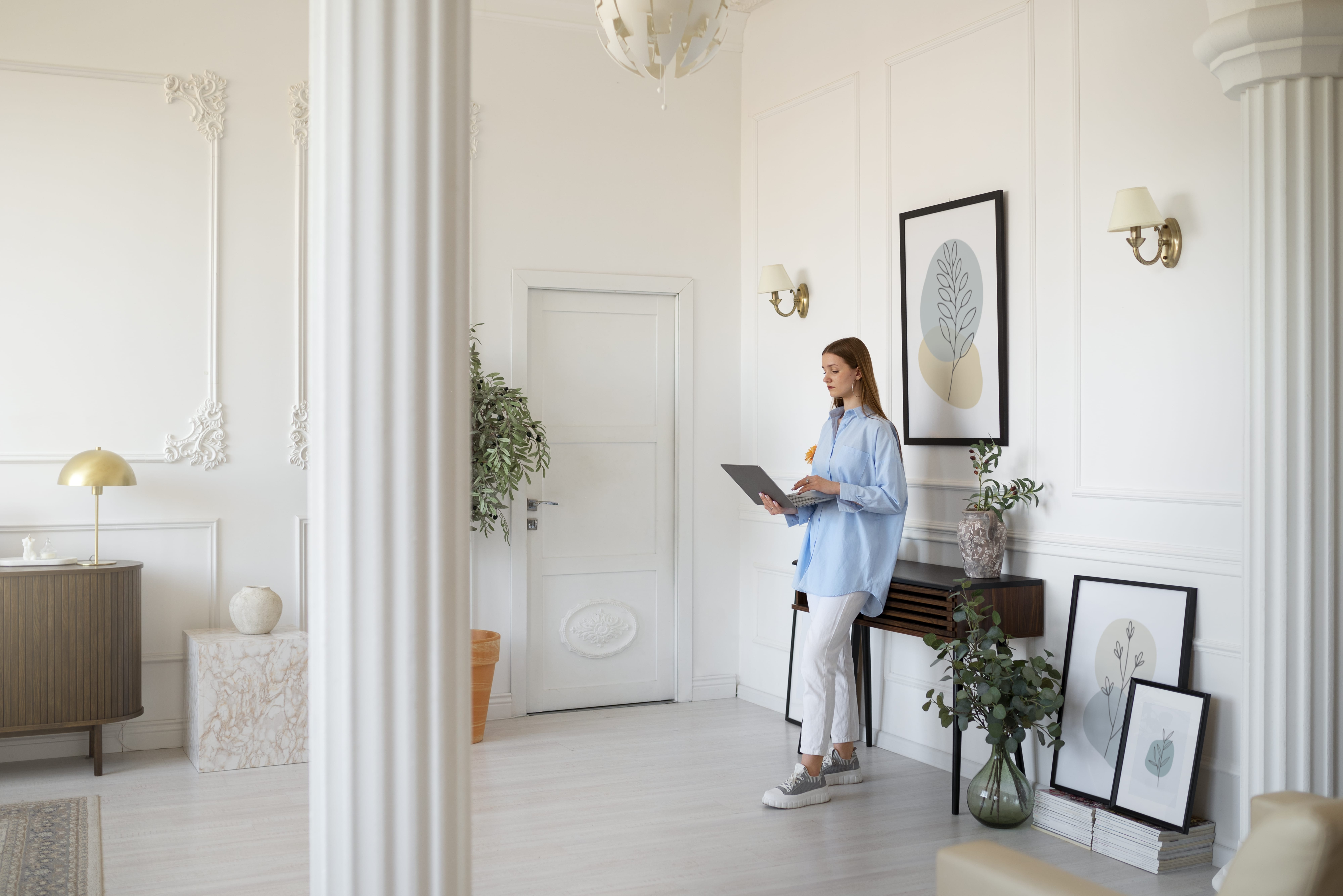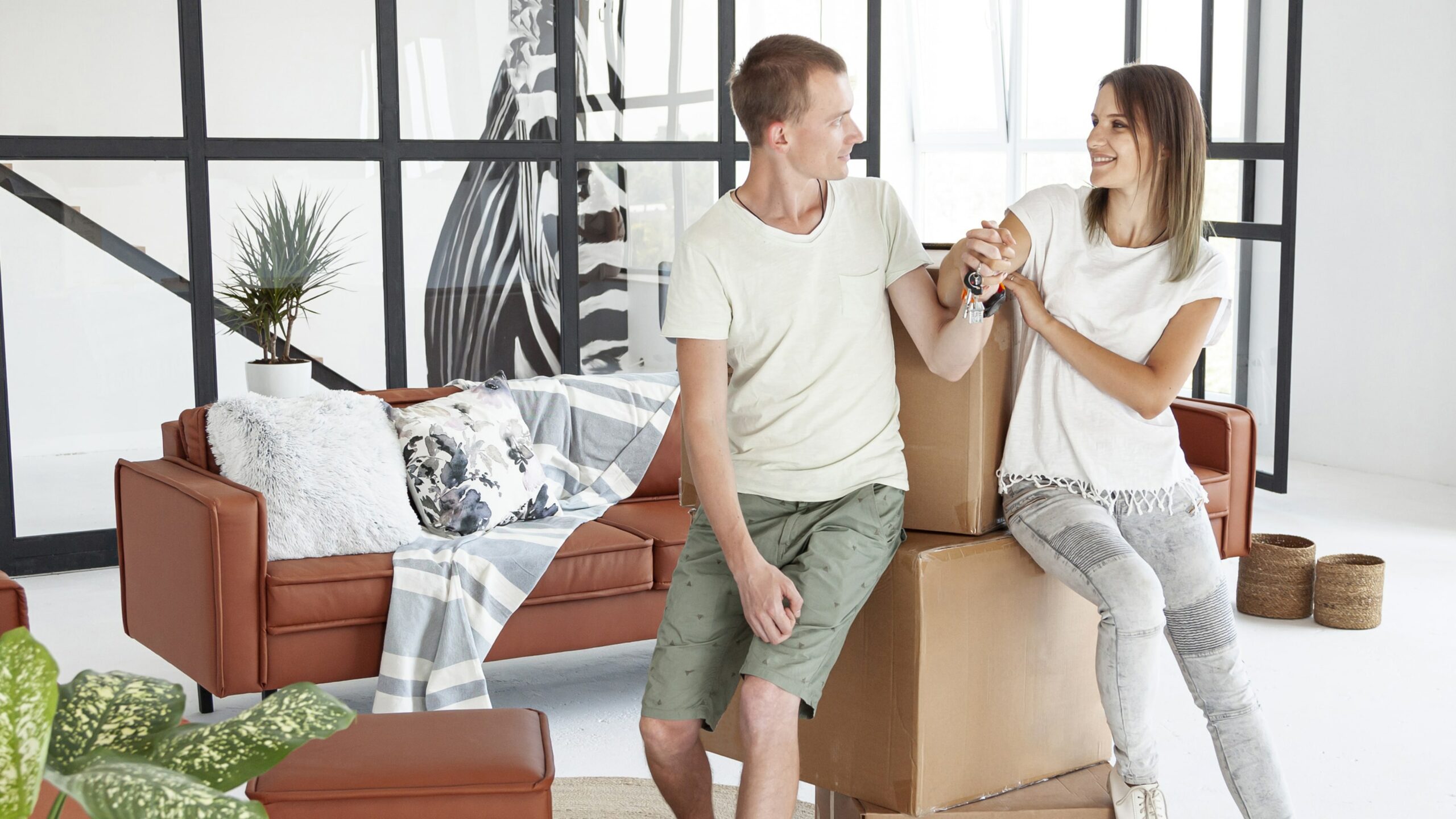
Most Common Australian House Styles 2024
Australian house styles reflect the nation’s rich architectural history, blending influences from various periods and cultures. From the Victorian era’s ornate designs to the sleek lines of modern architecture, each style tells a story of its time. This blog post delves into the diverse array of house styles found across Australia, offering insights into their origins, key features, and enduring appeal.
Exploring these distinctive architectural styles and house types provides a fascinating glimpse into Australia’s past while illuminating how historical context has shaped residential design. Whether you’re an architecture enthusiast or simply curious about the homes that dot Australia’s landscapes, this exploration by certified residential builders in Sydney promises to unveil captivating details about the evolution of house styles in this dynamic country.
Evolution of Australian House Styles
The Colonial Era in Australia was heavily influenced by the architectural styles of the Georgian and Victorian periods. Houses during this time were known for their symmetry and grandeur, often featuring a central door with an equal number of windows on either side. These houses also embraced the use of local materials, such as sandstone and timber, which reflected the practicality and availability of resources in early Australian settlements. For example, many colonial-era homes featured wide verandas that wrapped around the entire house, providing shade from the harsh Australian sun.
During this period, prominent features included high-pitched roofs, sash windows, decorative cornices, and intricate fretwork. The interiors were often adorned with ornate detailing to exude an air of elegance.
Iconic Australian House Designs
Queenslander Homes
Queenslander homes are a classic house style in Australia, designed to combat the tropical climates of the region. They are known for their elevated design, allowing air to circulate underneath and cool the house. This unique architectural feature helps keep the interior of the house cooler during hot weather. The houses are characterised by wide verandas that wrap around all sides, providing shade and protection from rain.
The timber construction of Queenslander homes is not only aesthetically pleasing but also serves a functional purpose. Timber has natural insulating properties, helping to regulate indoor temperatures. These homes are designed for natural ventilation, with high ceilings and strategically placed windows to encourage airflow throughout the living spaces.
Victorian Terraces
Victorian terraces stand out for their narrow, multi-storey designs that were popular during the Victorian era. These houses often featured decorative iron lacework adorning their balconies and verandas, adding an elegant touch to their facades. The intricate details on these terraces reflected the craftsmanship and attention to detail characteristic of this period.
A notable feature of Victorian terraces is their incorporation of small courtyards or gardens within limited urban spaces. Despite being constrained by narrow plots, homeowners maximised outdoor areas by creating charming green spaces that provided a respite from city life.
Beach Houses
Beach houses in Australia embrace open-plan layouts with expansive windows that allow natural light to flood into every corner of the home while offering breathtaking views of coastal landscapes. To withstand harsh coastal conditions such as strong winds and salt spray, beach houses utilise weather-resistant materials like fibreglass and aluminium in their construction.
Designed for panoramic views and coastal living experiences, beach houses often incorporate spacious decks or outdoor entertainment areas where residents can relax while enjoying stunning sunsets over the ocean.
Rural Homesteads
Rural homesteads blend traditional charm with modern amenities in a seamless fusion that reflects Australia’s rural lifestyle and Australian house styles. These homes showcase gabled roofs which not only add visual interest but also provide practical benefits such as increased ceiling height inside attic rooms or additional storage space.
In addition to incorporating large outdoor spaces suitable for farming or livestock activities, rural homesteads often feature wrap-around verandas—a hallmark element providing ample shaded areas where families can gather outdoors while enjoying scenic views across sprawling farmlands.
Contemporary Australian Architecture
Sustainable Design
Contemporary house styles in Australia often prioritise eco-friendly materials and sustainable design practices. This means using recycled timber for construction, incorporating solar panels to harness renewable energy, and implementing passive design strategies to naturally heat or cool the home. By focusing on reducing environmental impact through efficient systems, these houses aim to minimise their carbon footprint.
Moreover, sustainable designs also involve the use of water-saving fixtures and energy-efficient appliances to further reduce resource consumption. For instance, rainwater harvesting systems can be integrated into the house’s structure to collect and reuse water for various purposes such as irrigation or flushing toilets.
Urban Living
In urban areas of Australia, contemporary architecture tends to feature compact and space-efficient designs. With a growing emphasis on vertical living in high-rise apartments, architects are creatively maximising limited space by incorporating innovative storage solutions and multifunctional furniture. Communal spaces within residential complexes are being integrated to foster social interaction among residents.
Furthermore, modern urban homes may embrace smart technologies that enhance convenience and connectivity for inhabitants. These may include automated lighting systems controlled by mobile apps or voice commands, as well as integrated security features like smart locks and surveillance cameras.
Coastal Influence
The influence of coastal living is evident in contemporary Australian house styles through light, airy interiors with nautical elements such as beach-inspired colour palettes or decor accents reminiscent of sea life. To withstand salt exposure from coastal environments, weather-resistant materials like marine-grade stainless steel or specially treated timber are utilised in construction.
Outdoor living areas play a significant role in embracing coastal views while providing functional spaces for relaxation or entertainment. This could involve the incorporation of spacious decks or balconies equipped with durable outdoor furniture suited for coastal conditions.
Outback Inspiration
In contrast to coastal influences seen in some Australian house styles is the outback inspiration characterised by earthy tones and rugged textures prevalent in architectural designs across rural regions. The use of corrugated iron roofing not only adds visual appeal but also offers durability against harsh outback conditions including extreme temperatures and occasional dust storms.
Furthermore, shaded outdoor areas such as verandas or pergolas provide retreats from intense heat during scorching summers common in outback locations. These spaces offer opportunities for alfresco dining experiences while allowing occupants to appreciate expansive views of the surrounding landscape without being exposed directly under the sun.
Regional Variations in House Styles
Tropical North
In the Tropical North of Australia, house styles embrace open, breezy designs to allow for natural ventilation. These houses utilise lightweight materials that can withstand high humidity levels. Lush landscaping with tropical plants is also incorporated to create a seamless connection between the indoor and outdoor spaces.
The architecture in the Tropical North showcases an emphasis on embracing the natural environment while providing comfort and functionality. For example, homes often feature large windows and wide verandas to capture cooling breezes from all directions. Elevated floor designs are common to mitigate flood risks during heavy rainfall.
Arid Centre
Moving towards the Arid Centre of Australia, house styles focus on using thermal mass as a way to regulate indoor temperatures in extreme heat conditions. Earthy tones dominate both interior and exterior design choices, mirroring the surrounding desert landscape. Shaded outdoor areas are integrated into these house types to provide relief from intense sun exposure.
In this region’s architecture, there is a strong emphasis on sustainability and energy efficiency due to harsh environmental conditions. For instance, some houses incorporate passive solar design principles such as strategically placed windows for natural light without excessive heat gain.
Temperate South
Heading down south towards the Temperate South, Australian house styles showcase cosy and insulated designs tailored for colder climates. Double-glazed windows are commonly utilised for improved insulation against cold weather elements. Many homes incorporate fireplaces or heating systems to ensure winter comfort for inhabitants.
The architectural style prevalent in this region focuses on creating warm and inviting living spaces despite cooler temperatures outside. For example, some houses may feature well-insulated walls combined with efficient heating systems that reduce reliance on artificial heating during winter months.
What Are House Made Of in Australia?
The choice of materials and construction techniques plays a pivotal role in shaping the architectural landscape. Traditional Australian houses were often constructed using timber, stone, brick, and slate. Craftsmanship was paramount, with an emphasis on intricate woodwork or masonry details that showcased the skills of local artisans. These traditional materials reflected the regional availability of resources, with different areas favouring specific building materials based on what was abundant locally.
Modern innovations have transformed house construction in Australia by integrating smart home technology for convenience and efficiency. Sustainable building materials like engineered wood are now widely used to promote environmental consciousness while ensuring structural integrity. Innovative architectural techniques have also come to the forefront, allowing for unique designs that blend functionality with aesthetic appeal.
Climate considerations play a significant role in determining the construction techniques employed in Australian house styles. Designs are tailored to withstand extreme weather conditions prevalent in different regions across the country. Energy-efficient solutions take centre stage as builders focus on adapting homes to specific climates through strategic orientation and layout planning. This includes maximising natural light exposure to reduce reliance on artificial lighting and harnessing natural ventilation systems for improved energy efficiency. All these should be carefully considered when buying a new house in Australia.
Interior Design Trends in Australian Homes
Open Plan Living
Australian house styles often embrace open plan living, which seamlessly connects the living, dining, and kitchen areas. This design choice creates a sense of spaciousness by minimising interior walls, promoting an open and airy atmosphere. With fewer barriers dividing these spaces, family members can easily interact and engage with one another while performing various activities within the home.
The absence of distinct divisions also encourages social interaction within the household. For example, parents preparing meals in the kitchen can keep an eye on their children playing in the adjacent living area or engaging in homework at the dining table. This integration fosters a sense of togetherness and connectivity among family members as they go about their daily routines.
Open plan living is also beneficial for entertaining guests; hosts can freely move between different areas without feeling isolated from their visitors. This layout allows for more flexible furniture arrangements, enabling homeowners to customise their space according to their specific needs and preferences.
Indoor-Outdoor Flow
Another prevalent feature of house styles in Australia is the seamless transition between indoor and outdoor spaces through integrated sliding glass doors or bi-fold windows. By incorporating these elements into home designs, residents are able to enjoy a harmonious connection with nature right from within their homes.
These features extend beyond mere aesthetics; they serve as practical solutions for maximising natural ventilation during warm weather conditions while allowing ample sunlight to filter indoors. Moreover, utilising outdoor living areas as extensions of interior spaces provides additional room for relaxation or entertainment purposes.
For instance, families may opt to dine al fresco on a patio that adjoins the indoor dining area or host gatherings that spill out onto a deck connected to the main living space. These design choices enable homeowners to fully utilise every inch of available space while fostering an appreciation for nature’s beauty right at home.
Natural Light Maximisation
In Australian homes’ interior design trends emphasise maximising natural light through various strategies such as skylights or large windows that invite abundant daylight into interiors throughout each day. Furthermore,
light colours and reflective surfaces are frequently incorporated into decor schemes to enhance brightness levels naturally rather than relying heavily on artificial lighting sources.
By embracing these approaches towards natural light maximisation, homeowners create well-lit environments that promote feelings of warmth, comfort, and vitality throughout all areas of their homes.
Landscape and Garden Design
The landscaping in home design and garden design play a crucial role in enhancing the overall aesthetic appeal of a property. One key aspect of this design is the incorporation of native flora into landscaping. Utilizing indigenous plants not only adds natural beauty but also promotes sustainability by requiring minimal maintenance. For instance, gardens may feature iconic Australian plants like kangaroo paw, grevillea, or bottlebrush, showcasing the unique flora as an integral part of the outdoor space.
In addition to native flora, outdoor entertainment areas are a prominent feature in many Australian house styles. These spaces often integrate outdoor kitchens or BBQ areas to facilitate social gatherings and al fresco dining experiences. By creating versatile outdoor spaces that can accommodate various activities, such as lounging, dining, or hosting events, homeowners maximise their living area beyond the confines of their interiors. This trend reflects Australians’ love for spending time outdoors and enjoying their beautiful natural surroundings.
Moreover, water features are another significant element incorporated into Australian house styles’ landscape and garden designs. Homeowners often utilise these features for both aesthetic appeal and sustainable water management purposes. Pools or ponds may serve as focal points within the outdoor space while also contributing to sustainable practices through efficient water circulation systems or rainwater harvesting techniques.
Renovation and Restoration of Heritage Homes
Preserving Character
Preserving the character of heritage homes during renovation is crucial. Retaining historical architectural elements like ornate cornices, decorative fretwork, or intricate ceiling roses helps maintain the authentic charm of the property. By showcasing original features such as grand fireplaces or polished timber floorboards, homeowners can blend the old with the new seamlessly. For instance, when updating for modern living, integrating contemporary kitchen appliances into a traditional setting ensures that practicality meets history.
Restoration efforts in heritage homes also involve preserving their cultural significance. This might include restoring stained glass windows to their former glory or reinstating period-specific colour schemes to evoke a sense of nostalgia. These restoration endeavours not only honour the home’s past but also contribute to maintaining its unique identity within its surroundings.
Modern Comforts
Incorporating modern comforts into heritage homes involves integrating amenities without compromising their historical integrity. Implementing central heating and air conditioning systems discreetly ensures that residents enjoy optimal comfort without altering the building’s exterior aesthetics. Emphasising ergonomic design principles by reconfiguring spaces for improved functionality allows homeowners to experience convenience while respecting the home’s historic layout.
Moreover, prioritising convenience through modern appliances such as energy-efficient refrigerators and smart home technology enables occupants to embrace contemporary living standards within a historically significant environment.
Regulatory Challenges
Addressing regulatory challenges is an essential aspect of renovating and restoring heritage homes in Australia. Navigating zoning regulations in urban planning requires careful consideration to ensure that any modifications align with local guidelines while adhering to preservation requirements set forth by authorities. Compliance with building codes related to sustainability further adds complexity; incorporating eco-friendly materials and energy-efficient systems becomes imperative in meeting these standards.
The Impact of Lifestyle on Australian Home Design
Family Dynamics
Australian home designs are shaped by family dynamics. Houses are built with flexible spaces to accommodate changing family needs, such as converting a study into an extra bedroom or vice versa. Safety features like childproof locks and gates are prioritized in family-oriented house styles to ensure the well-being of children. Communal areas, including open-plan kitchens and living rooms, encourage family bonding and social interaction.
For instance, modern style house design in Australian often feature open-plan layouts that allow families to cook, dine, and relax together in one shared space. This design trend reflects the importance of fostering strong family connections within the home environment.
In addition:
- Pros
- Flexibility to adapt to changing family requirements
- Emphasis on safety for children
- Promotion of communal areas for strengthened family relationships
Work from Home Shift
The shift towards remote work has influenced house designs in Australia by integrating dedicated home office spaces within properties. These spaces are designed to provide a quiet and productive environment conducive to professional work. Furthermore, there is an emphasis on technology infrastructure within homes to support remote work capabilities, including high-speed internet connectivity and adequate power outlets for electronic devices.
For example, many modern Australian houses now include a designated study or office area equipped with ergonomic furniture and sufficient natural light to enhance productivity while working from home.
Moreover:
- Prioritizing quiet and productive environments within homes
- Integrating technology infrastructure for remote work capabilities
- Including dedicated workspace areas with suitable lighting conditions
Multigenerational Living
With multigenerational living becoming increasingly common in Australia, house designs have evolved accordingly. Many contemporary properties incorporate separate living quarters within the same building or on the same premises to accommodate multiple generations under one roof. Accessibility features catering specifically to elderly family members are integrated into these designs along with private spaces that foster intergenerational connections without compromising individual privacy.
As an illustration, some Australian homes feature self-contained granny flats or studio apartments attached to the main residence but equipped with their own amenities for independent living arrangements.
Furthermore:
- Incorporating separate living quarters within properties
- Focusing on accessibility features for elderly relatives
- Balancing privacy while promoting intergenerational connections
By incorporating flexible spaces for evolving families’ needs alongside considerations such as remote work integration and multigenerational accommodation options, Australian house styles continue adapting according lifestyle changes.
Future Directions in Australian Housing
Technology Integration
In Australia, the future of housing is closely tied to integrated smart home automation systems. This means that homes will be equipped with technology that allows for remote control and automation of various functions such as lighting, heating, and security. These systems are designed to make homes more convenient and efficient for their occupants. For example, homeowners can use their smartphones to control the thermostat or lock the doors from anywhere.
There is a strong emphasis on energy-efficient technology solutions in future Australian housing. This includes the use of smart appliances and renewable energy sources to reduce energy consumption and lower utility bills. For instance, houses may feature solar panels to harness the power of sunlight for electricity generation.
Connectivity throughout the house is another important aspect of future Australian housing. This involves ensuring that different devices within the home can communicate with each other seamlessly. For example, a homeowner might be able to program their lights to turn off automatically when they leave a room or adjust their air conditioning settings based on outdoor weather conditions.
Population Growth Response
Australian housing’s response to population growth focuses on high-density solutions in urban areas. With cities becoming increasingly crowded due to population growth, there’s an increasing trend towards building upwards rather than outwards – creating more apartment-style living spaces within urban centres. Multiple-story houses are also on the rise for the same reason.
Sustainable urban planning principles are being embraced as part of this response; this includes designing communities that promote walking over driving by situating essential amenities close by while also incorporating green spaces into densely populated areas.
Moreover, addressing housing affordability challenges through innovative designs is crucial amidst population growth pressures. This means developing cost-effective yet functional housing options without compromising quality or comfort – such as modular or compact living designs tailored specifically for urban environments.
Environmental Sustainability
Prioritising renewable energy sources like solar power takes centre stage. Houses will be designed with features like solar panels integrated into rooftops or even entire walls made up of photovoltaic cells – all aimed at harnessing sustainable energy resources while reducing reliance on non-renewable ones. This is also important for BASIX assessment in Sydney.
Furthermore, waste reduction through eco-friendly building materials plays a significant role in promoting environmental sustainability within Australian housing developments. This entails using materials like recycled timber or low-impact concrete alternatives which have less negative impact on natural resources during production compared conventional construction materials.
Implementing green building practices becomes paramount in minimising environmental impact associated with construction activities; these include strategies such as rainwater harvesting systems built into new constructions along with native landscaping choices aimed at preserving local ecosystems.
Most Common Types of Houses in Australia
After discussing the common house styles in Australia, let’s delve into more details about each. First, there’s the traditional Aussie bungalow, featuring a single story, a spacious veranda, and a cozy, laid-back atmosphere. Then, we have the contemporary townhouse, ideal for those seeking a low-maintenance lifestyle without compromising on space. Lastly, there’s the iconic Queenslander, known for its elevated foundation and stunning wrap-around balcony.
Closing Thoughts
So, there you have it – a deep dive into the diverse world of Australian house styles. From the evolution of architectural designs to the impact of lifestyle on home construction, we’ve covered it all. Now that you understand the rich tapestry of influences shaping Australian housing, it’s time to apply this knowledge. Whether you’re renovating, building from scratch, or simply appreciating the beauty of architectural diversity, keep these insights in mind. Embrace the unique blend of tradition and modernity that defines Australian homes, different house styles, and let it inspire your own housing choices.
Now go out there and explore the world of Australian house styles with fresh eyes and a newfound appreciation for the craftsmanship and creativity behind each design. Happy house hunting!
Experience
the
Difference
Ready to start your building journey? Chat to our team of experts today and get a FREE personalised quote
Find Out More
Related Posts







